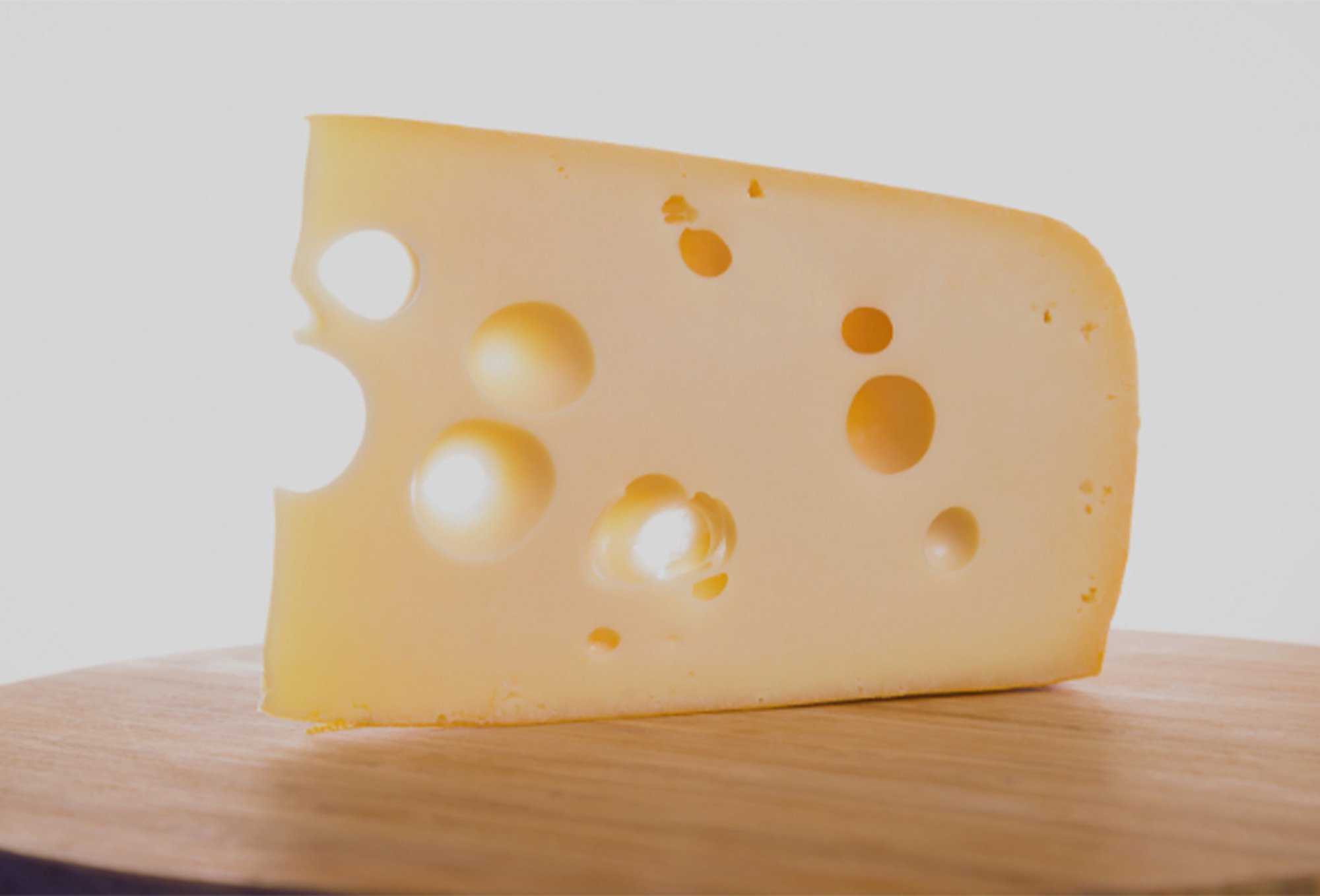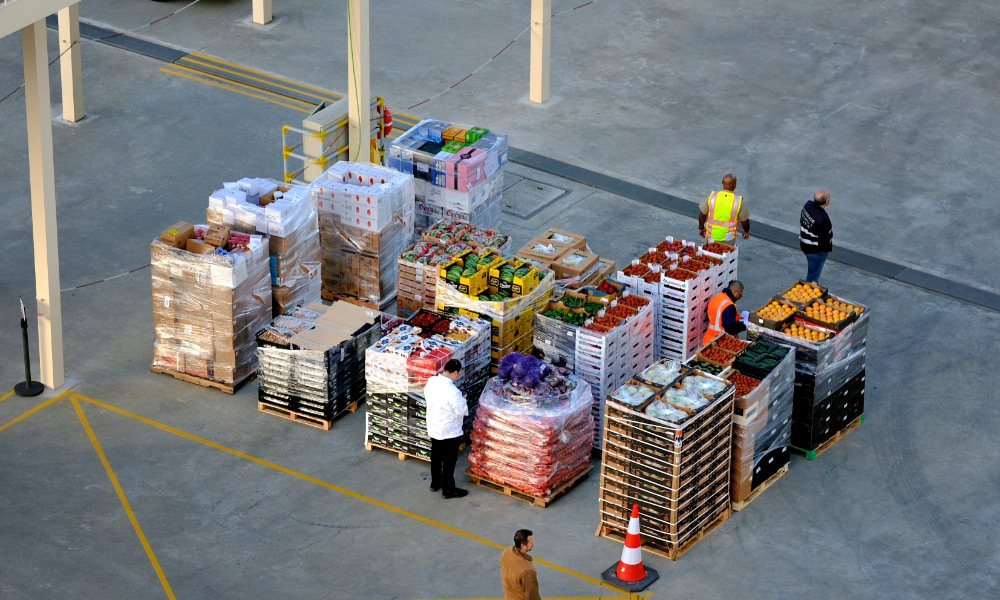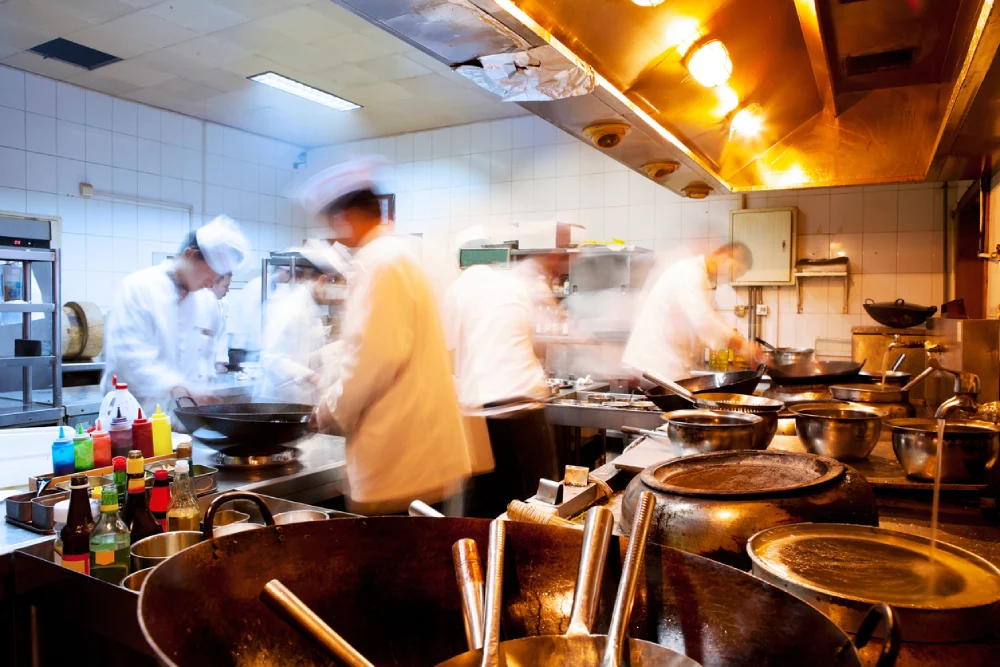By using our website, you agree to the use of cookies as described in our Cookie Policy
Why does Swiss Cheese have Holes?

If you've ever enjoyed a delightful sandwich with a slice of Swiss cheese, you've probably wondered why this cheese variety is so holey. There's a fascinating science behind those famed spots. In this blog, we're going to slice through the mystery and answer the question, “Why does Swiss cheese have holes?”
The Origins of Swiss Cheese
Our cheese journey will have to begin in picturesque Switzerland. Yes, the land of chocolate, the Alps, and, you guessed it, Swiss cheese. This beautiful country has been crafting cheese with a distinctively delicious flavor and iconic holes for centuries.
Before we get into the science of hole formation, let's meet two of the traditional Swiss cheeses: Emmental and Gruyère. These classics have been around for a while, and you might be surprised to learn that they don't have the signature holes.
So, what happened to the holes in traditional Swiss cheese? Well, it turns out there's more to Swiss cheese than meets the eye.
The Role of Microbes
The magic behind the holes lies in the cheese-making process, specifically, the role of microbes. Imagine a bustling cheese factory. Bacteria cultures play a significant role in cheese-making in these halls. They consume lactic acid in the cheese, and as they munch away, they produce carbon dioxide gas. This gas doesn’t just disappear — it forms air pockets within the cheese.
Here’s where the plot thickens. The holes in Swiss cheese are primarily due to a particular bacterial strain known as Propionibacterium. These microscopic, gram-positive, non-motile bacteria are responsible for creating those iconic Swiss cheese bubbles.
So what’s their secret? Propionibacterium takes the lactic acid leftover from other bacteria's snacking sessions and transforms it into something special – carbon dioxide. This gas doesn't escape the cheese but gets trapped, forming bubbles that we fondly call "holes."
The Art of Hole Formation
Cheese-Making Techniques
Various factors influence the size and distribution of the holes in the cheese-making process. Temperature, humidity, and fermentation times all play a role in determining the final outcome.
In essence, Swiss cheese is a canvas for culinary creativity, and cheesemakers are the artists who sculpt the holes in this gastronomic masterpiece.
Swiss Cheese Varieties
Not all holes in Swiss cheeses are identical. From Jarlsberg to Appenzeller, Swiss cheese varieties each have their distinctive characteristics. For instance, Jarlsberg is known for its medium-sized holes and a slightly sweet, nutty flavor. On the other hand, Appenzeller offers a more pronounced flavor and larger holes. These variations make Swiss cheese a fascinating family of flavors, with each member having its own quirks and traits.
The Culinary and Aesthetic Impact
Now that we've uncovered the science of Swiss cheese holes, let's explore why they matter. The culinary world embraces Swiss cheese not just for its distinctive flavor but also for its delightful texture. Those holes contribute to the cheese's mouthwatering, slightly nutty taste and light, airy feel.
You’re essentially experiencing a tiny flavor explosion with each chew every time you bite into a Swiss cheese sandwich. It’s the cheese that keeps on giving.
And let's not forget the aesthetic appeal. Those holes give Swiss cheese its unique and recognizable appearance. Swiss cheese always adds a touch of whimsy and sophistication, whether you're making a sandwich, melting it over potatoes in a fondue, or just admiring it on a cheese platter.
Why Does Swiss Cheese Have Holes: Key Takeaways
In the world of cheese, the Swiss variety stands out as the one with the holes – and now you know why. The science behind Swiss cheese holes is a fascinating tale of bacteria, carbon dioxide, and culinary artistry.
So, the next time you enjoy a sandwich with Swiss cheese, you can impress your friends with your newfound knowledge. You might even want to raise a toast to the tiny Propionibacterium chefs hidden within those holes in Swiss cheese.
Truly, the quirks and mysteries of our favorite food make them all the more delightful. As for Swiss cheese, it isn’t just holey; it’s wholesomely interesting and delicious.
Bon appétit, cheese enthusiasts!
‹ Back







